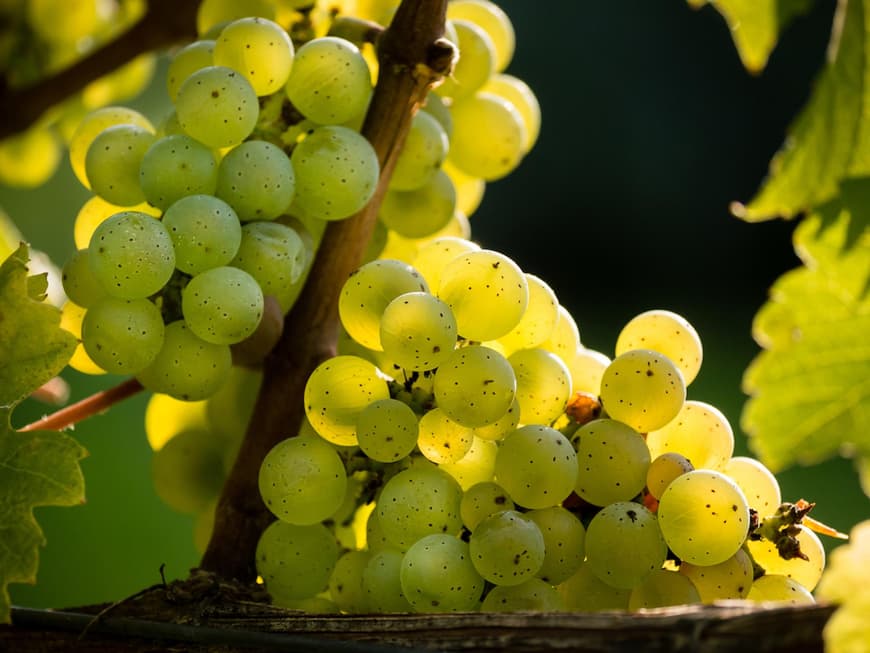
You simply have to love Riesling! This wine, which is so diverse and at the same time of such high quality, has been attracting everyone's attention for almost 600 years. Some find it fresh, elegant, sparkling, light and even aristocratic. This also makes it the most drunk German wine. We have put together 9 interesting facts about Riesling for you.
Where Riesling unfolds its potential
The Riesling grape variety is mainly grown in Germany, but also in other cool regions of the world. This is where this high-quality variety can develop its full potential: it is largely immune to German frost and the mild German summers do not burn the berries. This allows racy, elegant and fresh white wines to be pressed from it.
Germany supplies the world
This combination is so popular worldwide that Riesling is the most widely cultivated grape variety in Germany and occupies the best growing sites. Incidentally, this covers 45% of the world market. The USA comes next with only 10% - so Germany produces by far the most Riesling.
Where Riesling grows best
In Germany, the best sites for growing Riesling are the steep slopes to the south. The heat-retaining, mineral soils are exploited above all on the banks of the major rivers Rhine, Moselle and Nahe. Riesling accounts for almost 80% of the area under cultivation in the Rheingau.
The descendants of Riesling
Because Riesling is so popular, it often serves as a model for new varieties. Well-known varieties include Müller-Thurgau, Kerner and Scheurebe. However, there are many other "children" of Riesling, and the vine has been the inspiration for more than 50 new varieties.
Riesling and climate change
Incidentally, climate change could have a negative impact on Riesling cultivation. Summers that are too warm, such as in 2003, have a positive effect on the must quality of most grape varieties. For Riesling, however, the "vintage of the century 2003" was rather damaging. Summers that are too warm can encourage the berries to rot.
What Riesling tastes like
The wine made from Riesling grapes usually has a light to golden yellow color. Depending on the ripeness of the wine, the taste can change from fruity and acid-dominated aromas to mineral, earthy flavors. The terroir in particular, i.e. the special characteristics of the soil, can bring out the best in Rieslings and are often very popular with critics.
Riesling sweet and expensive
The Riesling grape is also so versatile because it can be used for so many different things. It is normally used to make white wine, but many sweet wines, such as Trockenbeerenauslese or ice wine, can also be produced. They usually have a honey-spicy aroma and are very popular as rare rarities at auctions.
The storage potential of Riesling
Due to their high acidity, Rieslings have great storage potential. Even after 10 years, such a wine can still have a lot to offer. The young aromas of apple slowly recede over the years and make room for particularly delicate notes.
How do you find the right Riesling?
It is worth trying Rieslings from different vineyards. The steep slopes of the Rhine, Moselle and Nahe are particularly interesting, but there are also good sites in other areas such as Rheinhessen and the Palatinate. Award-winning winegrowers include Weingut Emil Bauer und Söhne, Weingut von Winning and Weingut Reichsrat von Buhl. It is definitely worth keeping your eyes open and tasting wines from different vineyards. Especially with Riesling, you can taste it! Cheers!
Picture sources
Cover picture: © A_Peach: https://www.flickr.com/photos/a_peach/10118010186
